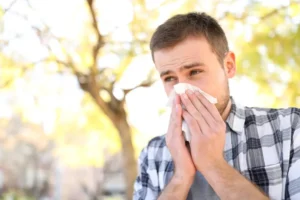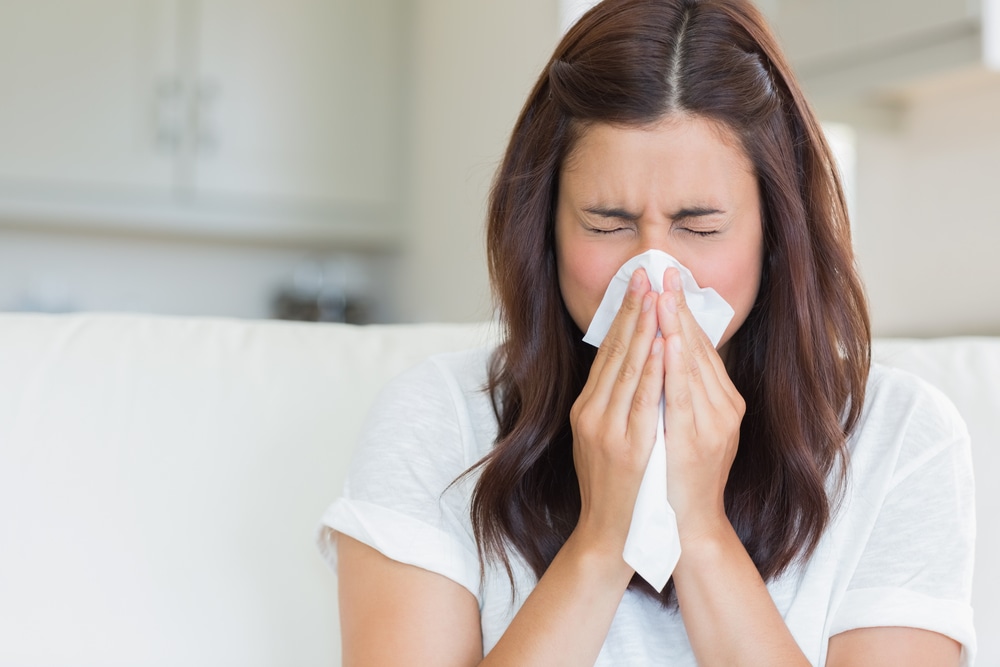Allergies can make life uncomfortable, but regular cleaning can help reduce allergens and improve indoor air quality in your home. From dust mites to pet dander and pollen, allergens can build up quickly, leading to symptoms like sneezing, coughing, and itchy eyes. In this guide, we’ll share the most effective cleaning practices to help keep your home allergy-free all year round.

ow to Keep Your Home Allergy-Free
1. Vacuum Regularly with a HEPA Filter
Dust, dirt, and allergens can quickly settle into your carpets and upholstery, contributing to poor air quality. To keep allergens under control, vacuum your home at least twice a week using a vacuum equipped with a HEPA filter. HEPA filters are designed to trap tiny particles like pollen and dust mites, preventing them from being recirculated into the air.
When vacuuming, don’t forget to cover high-traffic areas and use attachments to clean hard-to-reach spots like under furniture and in corners.
2. Dust Smartly Using Microfiber Cloths
Regular dusting is essential to reducing allergens, but how you dust matters. Instead of using traditional dusters, which can stir allergens back into the air, use microfiber cloths that capture and hold onto dust particles. Be sure to dust frequently, especially in areas like shelves, blinds, and electronics, where dust tends to accumulate.
For an even deeper clean, consider using damp microfiber cloths, as the moisture helps trap dust more effectively without causing particles to become airborne.
3. Wash Bedding and Curtains Frequently
Your bedding and curtains can be major culprits when it comes to harboring allergens like dust mites and pet dander. To minimize this, wash your bedding weekly in hot water (at least 130°F) to kill dust mites. If possible, choose hypoallergenic pillowcases and mattress covers to create a barrier against allergens.
Curtains and drapes can also collect dust and allergens, so be sure to wash them regularly or switch to washable, lightweight curtains that are easier to maintain.
4. Control Humidity Levels
Dust mites and mold thrive in humid environments, making it important to monitor and control your home’s humidity levels. Keep humidity levels between 30-50% using a dehumidifier or by running the air conditioner, especially during warmer months. In bathrooms and kitchens, ensure proper ventilation to prevent mold growth by using exhaust fans or opening windows.
Check for any leaks or standing water in basements, bathrooms, or under sinks, as these areas can promote mold and mildew growth.
5. Clean Air Filters and Vents Regularly
Your home’s air filters play a crucial role in keeping allergens at bay, but they need to be cleaned or replaced regularly to work effectively. Change your HVAC filters every 1-3 months and opt for filters with a MERV rating of 8 or higher for maximum allergen reduction.
Don’t forget to clean air vents and ducts as well. Dust and allergens can accumulate in these areas, and when the air system is running, they can be recirculated into the living space.
6. Keep Pets Groomed and Clean
If you have pets, their fur and dander can be significant sources of allergens. To minimize this, groom and bathe your pets regularly to reduce the amount of fur and dander in your home. Additionally, designate specific areas where pets are allowed to help contain allergens. Keep pets out of bedrooms and off of upholstered furniture to limit their impact on your home’s air quality.
Consider using air purifiers with HEPA filters in rooms where your pets spend the most time to capture pet-related allergens.
7. Use Non-Toxic, Fragrance-Free Cleaning Products
Many cleaning products contain chemicals and fragrances that can exacerbate allergies. To minimize irritation, choose non-toxic, fragrance-free cleaning products that are gentle on the airways. You can also make your own cleaning solutions using natural ingredients like vinegar, baking soda, and lemon.
For those who suffer from asthma or chemical sensitivities, consider wearing a mask while cleaning to avoid inhaling any particles or fumes.
8. Steam Clean Carpets and Upholstery
Carpets and upholstered furniture can trap allergens deep within their fibers, making it difficult for regular vacuuming to remove them completely. To give these surfaces a deeper clean, consider steam cleaning at least once or twice a year. The high-temperature steam helps kill dust mites and break down allergens, providing a more thorough clean.
If you have severe allergies, switching to hardwood or tile flooring and using area rugs that can be easily cleaned may help reduce allergen accumulation.
Final Thoughts
Keeping your home allergy-free requires a consistent cleaning routine and smart strategies to minimize allergen build-up. By vacuuming with a HEPA filter, controlling humidity, and cleaning key areas like bedding and air filters, you can significantly reduce the allergens in your home and enjoy a healthier, more comfortable environment.
For a deeper, professional clean that targets allergens in carpets, upholstery, and hard-to-reach areas, contact SAB Cleaning Orlando. Our expert team is equipped to provide thorough cleaning services to help you breathe easier in your home.


Recent Comments